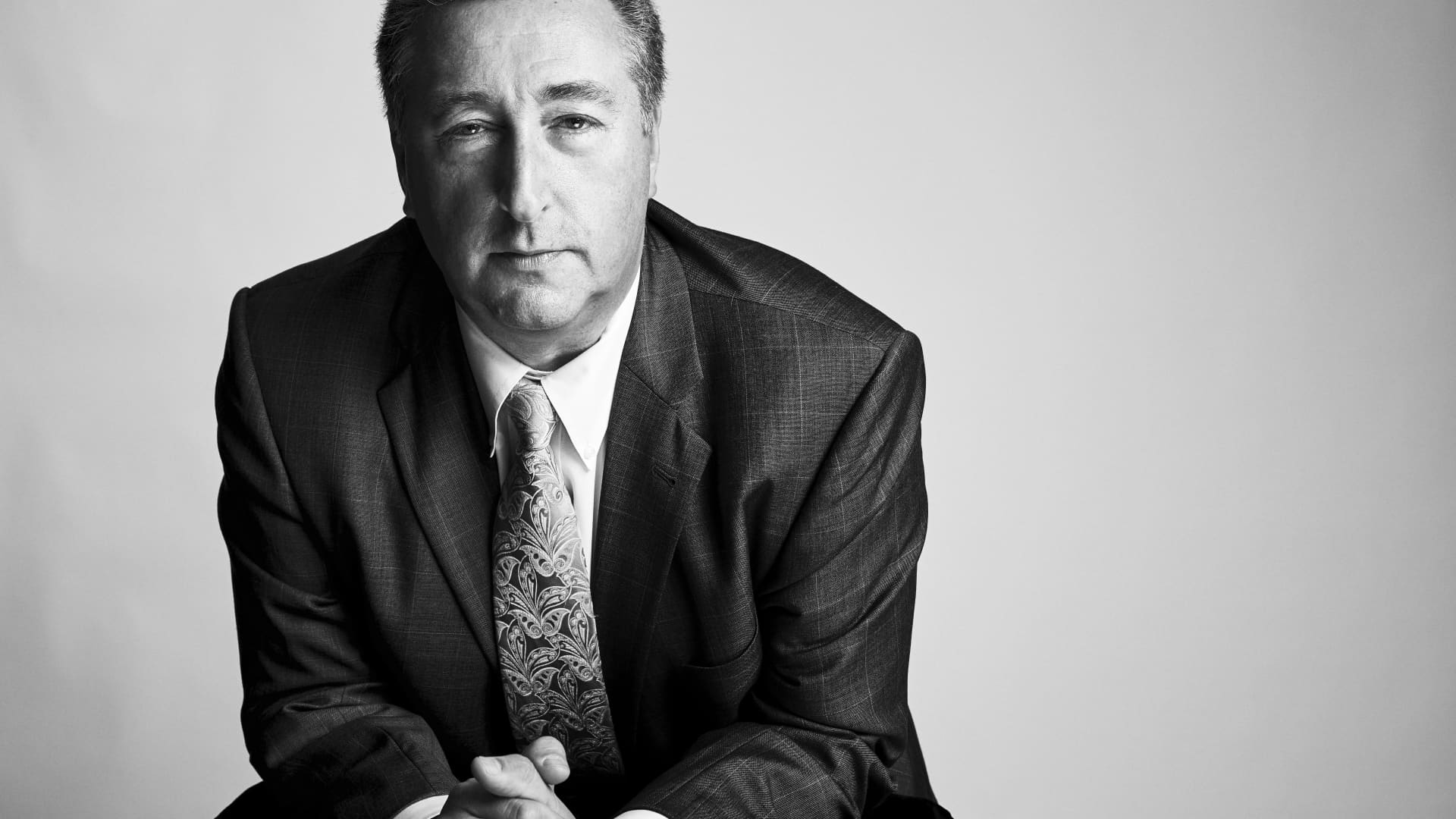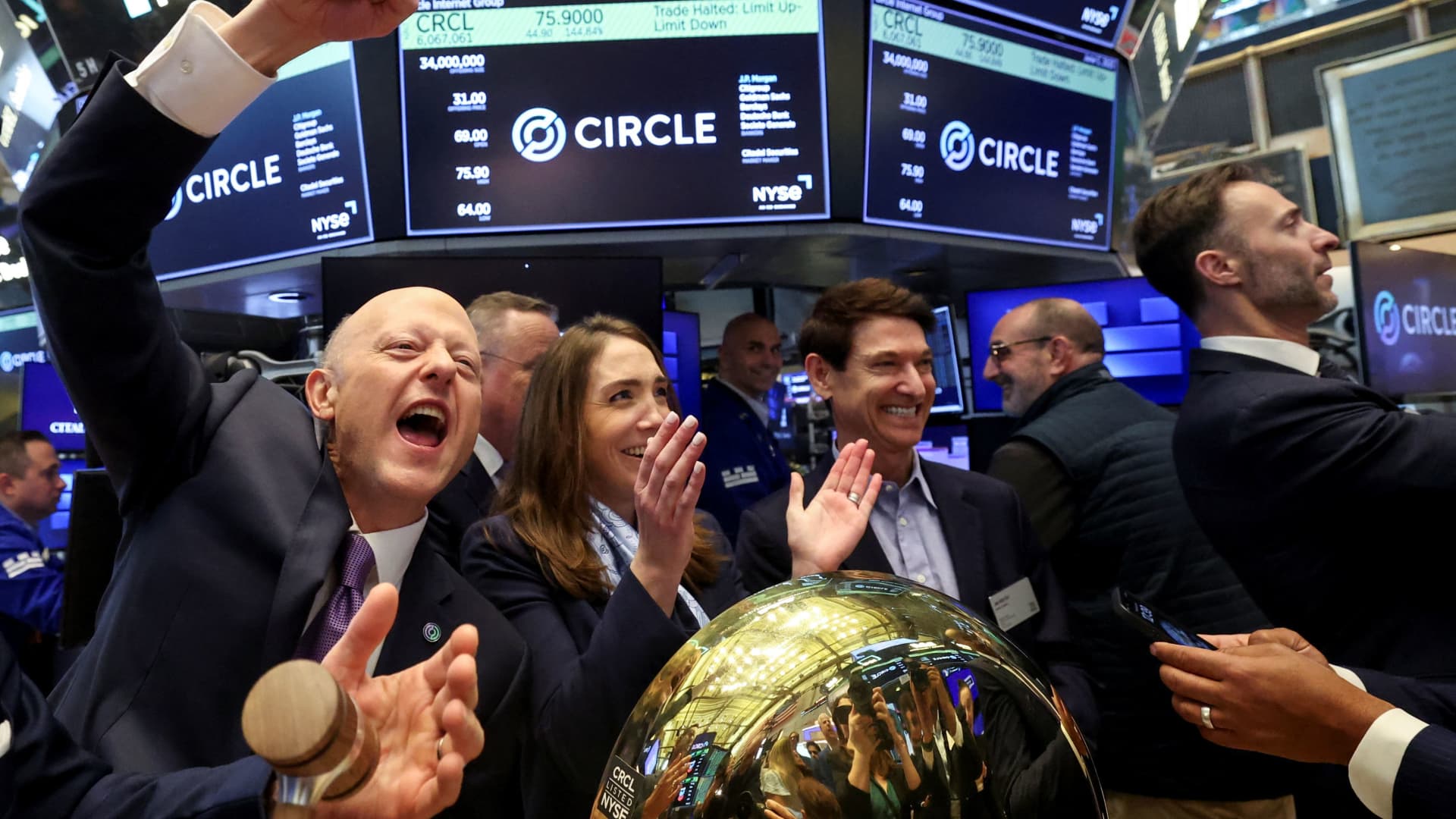Barry Ritholtz
Barry Ritholtz
Barry Ritholtz had a hard time writing his first book, “Bailout Nation.”
Drafted in the midst of the 2008 financial crisis, the biggest challenge, he said, was that a different company “would blow up” every week.
It felt as if the writing “was never over,” said Ritholtz, the chairman and chief investment officer of Ritholtz Wealth Management, an investment advisory firm that manages more than $5 billion of assets.
By comparison, the new book was a “joy” to write, largely due to the benefit hindsight, said Ritholtz, who is also a prolific blogger and creator of the long-running finance podcast “Masters in Business.”
The book, “How Not to Invest: The Ideas, Numbers, and Behaviors That Destroy Wealth — And How to Avoid Them,” published March 18, is a history lesson of sorts.
More from Personal Finance:
Why the father of ‘life planning’ says you’re managing money the wrong way
It’s not always ‘a sexy thing’ to be a millionaire, former NFL linebacker says
Take a look inside a $1.1 million ‘zero emissions’ home
Ritholtz looks back at anecdotes across pop culture and finance — touching on Hollywood titans like Steven Spielberg, music sensations like The Beatles, and corporate pariahs like Elizabeth Holmes of Theranos — to illustrate the disconnect between how much people think they know and what they actually know. (Ritholtz’ point being, The Beatles and films like “Raiders of the Lost Ark” were initially panned; Holmes, initially lauded, is now serving jail time.)
“It’s a huge advantage to say, ‘I know how the game ended,'” Ritholtz said. “What the analysts were saying in the second, third, fourth inning, they didn’t know what they’re talking about.”
CNBC spoke to Ritholtz about why people are often bad investors, why famous investors like Warren Buffett are “mutants,” and why financial advice about buying $5 lattes is the cliché that just won’t die.
This interview has been edited and condensed for clarity.
How to be ‘miles ahead of your peer investors’
Greg Iacurci: Your No. 1 tip to being a better investor is to avoid mistakes — or, as you write, “make fewer unforced errors.” What are some of the most damaging unforced errors you often see?
Barry Ritholtz: Let’s take one from three broad categories: Bad ideas, bad numbers and bad behaviors.
Bad ideas are simply, wherever you look, people want to tell you what to do with your money. It’s a fire hose of stuff. Everybody is selling you some bulls*** or another. And we really need to be a little more skeptical.
On the numbers side, the biggest [mistake] is simply: We fail to understand how powerful compounding is. A lot of the dumb things we do get in the way of that compounding. Cash is not a store of value. It’s a medium of exchange, and you shouldn’t hold on to cash for very long. It should always be in motion, meaning you should be paying for your rent or mortgage with it, paying your bills and your taxes, whatever recreational stuff you want to do, whatever philanthropy you want to do and whatever investing you want to do. But money shouldn’t just sit around.
Compounding is exponential. When I ask people, “If I’d invested $1,000 in 1917 in the stock market, what’s it worth today?” You look at what the market’s returned — 8% to 10%, with dividends reinvested — $1,000 a century later is worth $32 million. And people simply can’t believe it. Ten percent [reinvested dividends] means the money doubles every 7.2 years.
The biggest [behavioral error] is simply, we make emotional decisions. That immediate emotional response never has a good outcome in the financial markets. It is exactly why people chase stocks and funds up and buy high, and why they get scared and panic out and sell low.
If you just avoid those three things, you’re miles ahead of your peer investors.
Not all plays are ‘Hamilton’
GI: Going back to something you mentioned about how relentless bad financial advice is, what are some memorably bad pieces of financial advice or investment opportunities you’ve come across?
BR: I get a lot of weird things — plays, restaurants. You should know, most plays are not “Hamilton” and most restaurants are not Nobu. These are really, really difficult investments. Those are all the winners. You’re not seeing the other million products in the same space that didn’t make it.
I think we have this really distorted viewpoint of the world that allows us to believe that finding a giant winner is much easier than it really is. And that is because you don’t see the endless fails, the restaurants that implode, the plays that close after opening night. All these little investment opportunities that come along, and the people selling [them], the advice they’re giving, they’re always weird and quirky. A great restaurant is a really good business, but most restaurants are terrible businesses, and that’s a hard thing for people to recognize.
The financial ‘cliché that refuses to die’
GI: There’s this great part in the book where you talk about the $5 coffee: The thought being, if you invest that money instead of buying coffee, you’ll basically be a millionaire. You write that it’s the “cliché that refuses to die.” Why do you think it’s detrimental for people to think this way?
BR: $5, really? I don’t want to come across as a completely detached one percenter, but if a $5 latte is the difference between you having a comfortable retirement or not, you’ve done something very, very wrong.
Let’s say you do put $5 away. If you saved $5 every day and invested it, it adds up to something. But when you look out 20, 30, 40, years, the other side of the spending equation is, what’s my income going to be? How much am I going to earn? If you’re going to show me $5 compounding over 30 years, you also have to show me where my income is going to be. If I’m looking at this as a 30-year-old, what’s my income going to be at 60? How will my portfolio, my 401(k) — and if I have kids, my 529 [college savings] plan — how will that have compounded over the same time? If you’re only looking at the $5 latte but ignoring everything else — and that’s before we even get to inflation — it looks like a chunk of money but it really isn’t.
The big philosophical problem that I’ve found is most of the spending scolds don’t understand what the purpose of money is.
GI: What is the purpose of money?
BR: Money is a tool. First, lack of money certainly creates stress. You can worry about paying the bills, and if you have a kid, how am I going to pay for their health care? Not having sufficient money to pay the rent, buy food, pay for health care, is certainly stressful. The first thing money does is it chases away the lack-of-money blues.
Everybody is selling you some bulls*** or another. And we really need to be a little more skeptical.
Money [also] creates optionality. It gives you choices. It gives you freedom. It allows you to not do many of the things you don’t want to do. And it allows you to buy time with friends and family experiences and to create memories.
It’s the ability to spend your time how you want, with who you want, doing whatever work you want, or no work at all, if you eventually get to that point.
GI: What should people do to make investing as simple as possible and have good outcomes?
BR: [Vanguard Group founder] Jack Bogle figured this out 50 years ago. If you want to find the needle in the haystack — if you want to find the Apples, Amazons, Microsofts, Nvidias, J.P. Morgans, United Healthcares and Berkshires [of the world] — don’t look for the needle in the haystack. Just buy the whole haystack. (Editor’s note: The “haystack” here refers to buying an index fund that tracks the broad stock market rather than trying to pick winners.)
You make the core part of your portfolio a broad index, and then you put whatever you want around it.
So, start out with a basic index, be very tax-aware of what you do, and then back to the behavioral stuff: Don’t interfere with the market’s ability to compound.
The crazy thing about Warren Buffett: His wealth has doubled over the past seven years. Think about how insane that is. He’s 94, like half of his wealth came about from zero to [his late eighties], and the other half came about in the last seven years. That’s the miracle of compounding.

 Blog Post7 days ago
Blog Post7 days ago
 Economics1 week ago
Economics1 week ago
 Finance1 week ago
Finance1 week ago
 Economics1 week ago
Economics1 week ago
 Economics1 week ago
Economics1 week ago
 Personal Finance1 week ago
Personal Finance1 week ago
 Accounting1 week ago
Accounting1 week ago
 Economics1 week ago
Economics1 week ago










